May 15, 2025 | 09:35 GMT +7
May 15, 2025 | 09:35 GMT +7
Hotline: 0913.378.918
May 15, 2025 | 09:35 GMT +7
Hotline: 0913.378.918
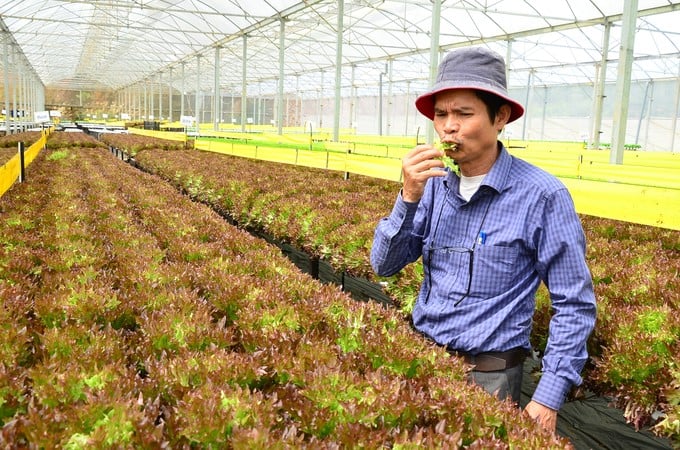
Mr. Tran Huy Duong (Lang Biang Farm Company) confidently eats vegetables right at the greenhouse. Photo: Duong Dinh Tuong.
According to Mr. Tran Huy Duong, owner of greenhouses worth VND 600 billion, Decision 178/QD-UBND dated January 30, 2023 of the Lam Dong Provincial People's Committee aims to manage greenhouses and promote agricultural production with high-tech application and climate change adaptation. The general goal is to synchronously deploy solutions to gradually reduce and eventually eliminate greenhouse areas in inner-city areas and residential areas in Da Lat city and neighboring districts.
The specific goal is to reduce 20% of the area of greenhouses for agricultural production in inner-city areas and residential areas by 2025 compared to the current situation in 2022. By 2030, gradually decrease, moving towards no more greenhouse areas in inner-city areas and residential areas in Da Lat city.
"Personally, I think this Decision is very difficult to implement, and in order for us to relocate, there must be a compensation policy for the assets we have invested in. This Decision causes a lot of insecurity for people who are using agricultural land to make greenhouses for high-tech agriculture," Mr. Duong stated. For a multi-dimensional perspective, he would like to share as follows:
Greenhouses (or membrane houses) started in Da Lat 30 years ago when DaLat Hasfarm Company applied temperate flower-growing technology. Greenhouses were then gradually developed and supported by the government. In high-tech agriculture, greenhouses are almost a necessary condition. The comparison table below shows the superiority of cultivating temperate vegetables and flowers in greenhouses.

The amount of fertilizers and pesticides is minimized because they are not washed away. Land use efficiency is almost 100% due to microclimate control. It can be said that high-tech agricultural production has been making Da Lat farmers rich. Experiencing high-tech agricultural vegetables and flowers is also a highlight to enrich Da Lat tourism.
Depending on the needs of crops and investment ability, there are different investment rates for greenhouses in Da Lat:
- Bamboo greenhouse (excluding auxiliary equipment) worth VND 1 billion/ha.
- Iron greenhouse connected by welding (excluding auxiliary equipment) worth about VND 2 billion/ha.
- Galvanized iron greenhouse connected by screws (excluding auxiliary equipment) worth about VND 3 billion/ha.
- Modern hot galvanized iron greenhouse worth about VND 10-20 billion/ha.
The world's greenhouse development trend is increasing by an average of 20–25%/year, while in Vietnam, it is about 8–10%/year, with an existing area of about 7,000 hectares, mainly in Lam Dong.
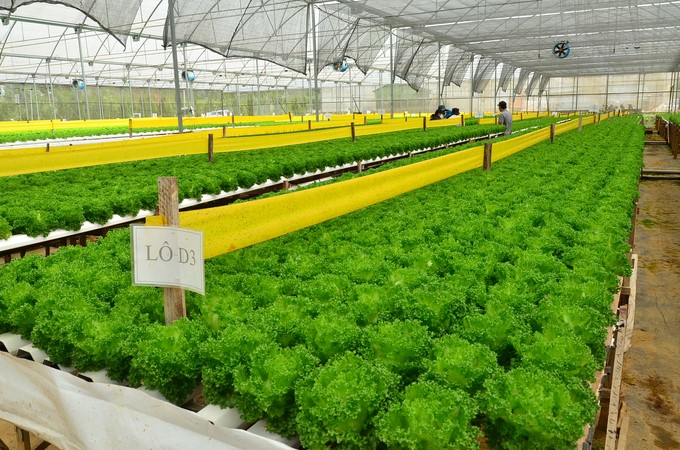
Vegetable growing greenhouse in Da Lat. Photo: Duong Dinh Tuong.
According to data from the US Geological Survey, the outdoor temperature in areas with greenhouses is 0.8°C lower than areas without greenhouses. But in the media, social networks, and public opinion, it seems that only Vietnam says greenhouses cause climate change.
However, some downsides of greenhouses are that, from a tourism perspective, the urban landscape looks white, causing eye pain and discomfort. The greenhouse is one of the factors causing landslides and floods in Da Lat due to not collecting surface water (100% of rainwater is pushed into rivers and streams). Entering a greenhouse when it is sunny (if not following correct technique and without auxiliary equipment), the temperature inside can be 3–7°C higher than outside. People who do not understand will think that greenhouses make the weather hotter.
Climate change is serious globally, so Da Lat cannot avoid it. For example, the average temperature increased by 0.5°C in 10 years; the outdoor temperature reached 30.5°C on April 20, 2024; the rainfall after 5 minutes reached 20mm on June 23, 2022. Landslides, floods, and tornadoes also occurred, along with many other extreme natural phenomena. In addition, Da Lat's master development planning still has many shortcomings.
Mr. Duong cited that, according to Article 10 of the Land Law 2013, building greenhouses for agricultural development according to regulations does not require permission from competent state agencies. But households making that conversion must register land changes after implementation. In fact, except for a few approved investment projects, most people who legally build greenhouses on agricultural land do not complete land change registration procedures.
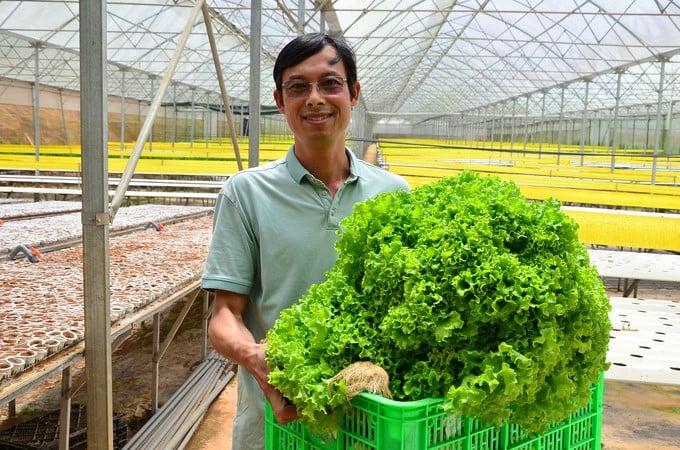
Harvesting vegetables grown in greenhouses. Photo: Duong Dinh Tuong.
Urban planning in general must be long-term and feasible, accept greenhouses in urban areas (urban agriculture), and pay special attention to surface water drainage systems. Those who have lived in the Hoang Dieu market area (ward 3, Da Lat city) know clearly the effects of planning to renovate Cam Ly stream, which helps this area never be flooded again.
The experience of managing greenhouses in other countries is to plan and follow the plan. Greenhouses are a valuable asset and a farmer's inheritance. To do high-tech agriculture, it is necessary to invest in assets with greenhouses, pre-processing, packaging, and post-harvest processing areas, ponds and water collection systems, cold storage, in-field transportation systems, auxiliary machinery and equipment collection areas, material warehouses, waste collection and treatment areas, sanitation areas, etc.
These assets need to be recognized and treated equally by law like other assets. There need to be concepts, regulations, standards, norms (this is also a quite complicated issue and will be mentioned in another article), permission management (refer to regulations such as the Construction Law), and asset recognition.
Therefore, according to Mr. Duong, long-term greenhouse planning (equivalent to an architectural planning cycle) is necessary while immediately controlling the renewal of greenhouses according to the correct procedures. The Central Government even needs to have its own resolution on greenhouses for Da Lat. Besides, there need to be sanctions, regulations, and solutions to collect surface water from greenhouse areas. In the immediate future, it is possible to make regulations on surface water collection as the standard to evaluate products of OCOP, VietGAP, and GlobalGAP, high-tech, organic agricultural enterprises of units with greenhouse production.
"I suggest having a convincing scientific topic for this issue. For greenhouses with a large, modern investment value, there need to be specific regulations. For example, with greenhouses worth over VND 20 billion/ha, an investment project must be established. Besides, it is necessary to make statistics, register, and record assets for greenhouses. It is essential to have greenhouse models for high-tech investment to combat climate change for sustainable agricultural production, aiming for net-zero agriculture and agriculture selling carbon credits."
(Mr. Tran Huy Duong)
Translated by Thu Huyen
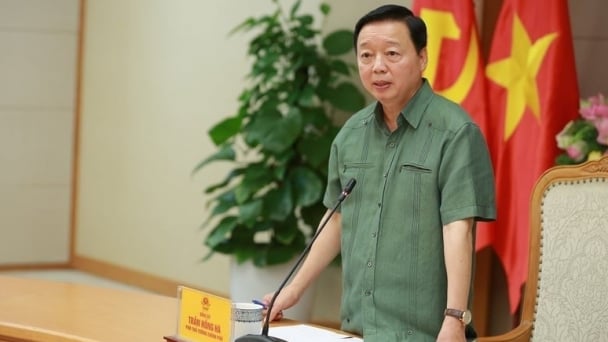
(VAN) Vietnam's draft amendment to Decree No. 156 proposes a mechanism for medicinal herb farming under forest canopies, linking economic development to population retention and the sustainable protection and development of forests.
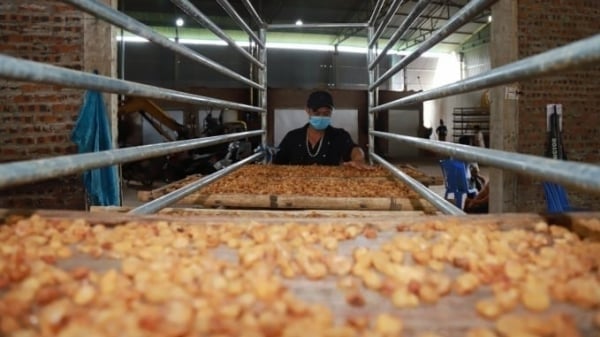
(VAN) In reality, many craft village models combined with tourism in Son La have proven effective, bringing significant economic benefits to rural communities.

(VAN) The international conference titled Carbon Market: International experiences and recommendations for Vietnam was successfully held recently in Ho Chi Minh City.
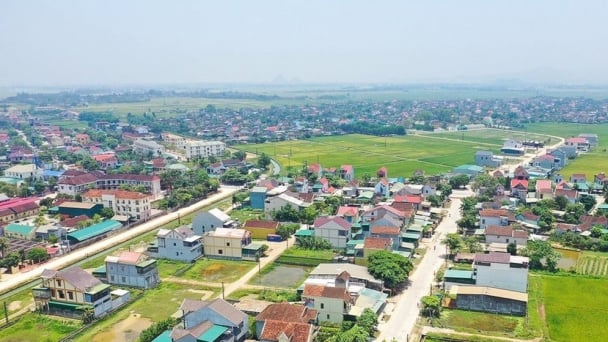
(VAN) According to the Project on rearranging provincial and communal administrative units, in 2025, the country will have 34 provinces/cities, 3,321 communes, wards, and special zones, and no district-level organization.
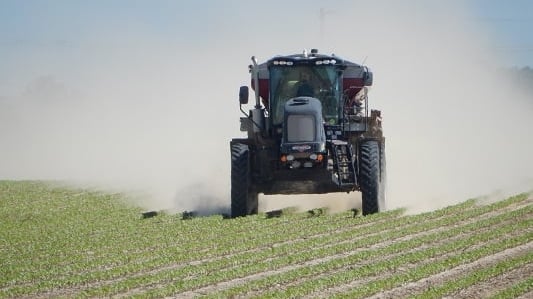
(VAN) The vice president of fertilizer with Stone X Group says the Trump administration’s tariffs are impacting fertilizer markets.
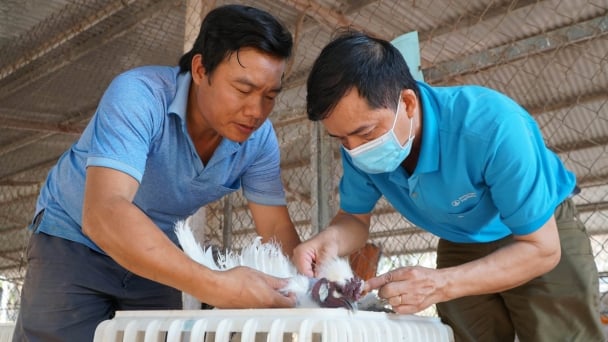
(VAN) Resolution 57 offers Vietnam a significant opportunity to narrow the global genetic technology disparity and convert its extensive genetic resources into commercial advantages.

(VAN) The Ministry of Agriculture and Environment will prioritize the implementation of five core and breakthrough solutions in science and technology, in addition to the seven groups of tasks identified in Decision No. 503.